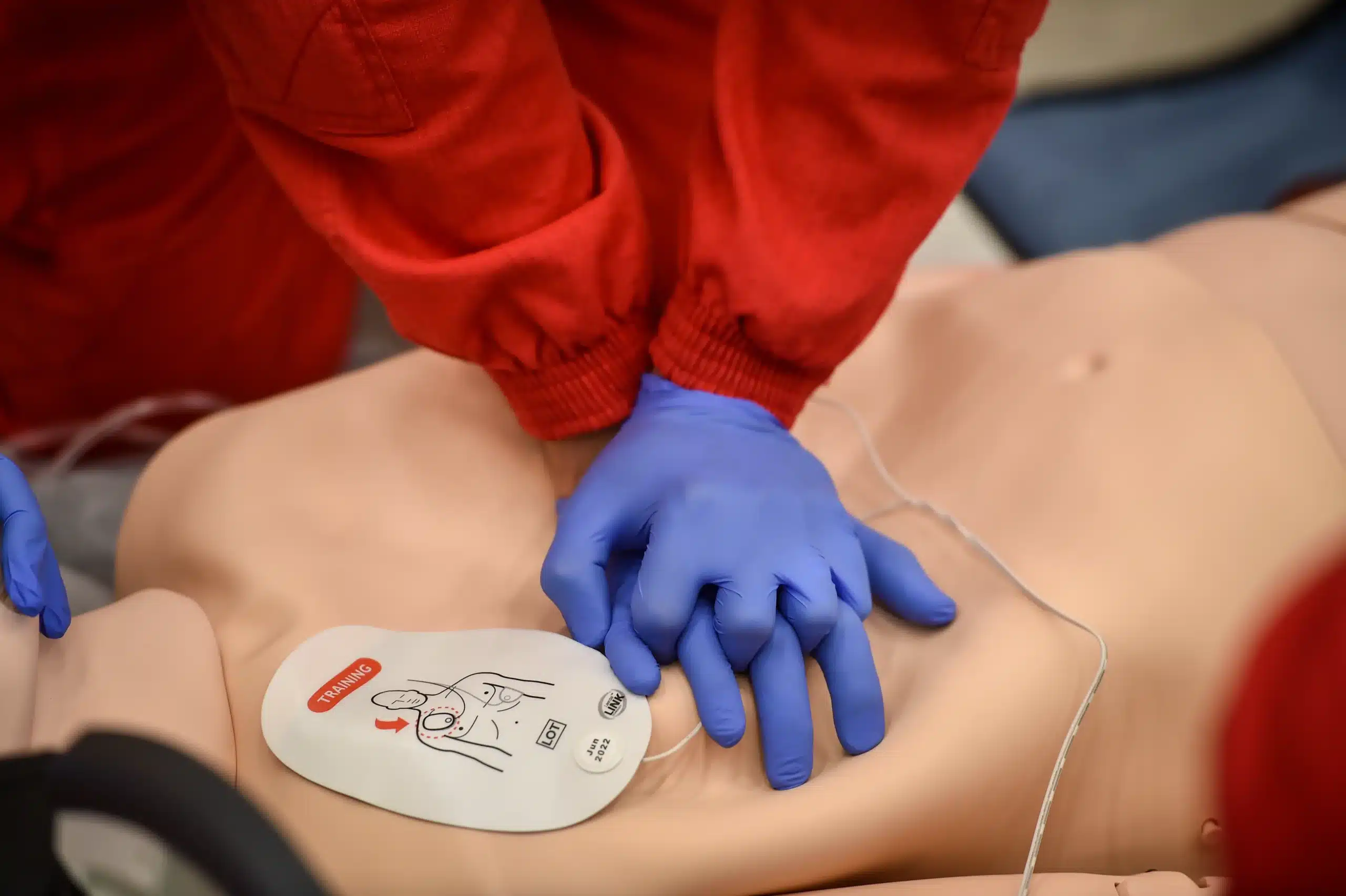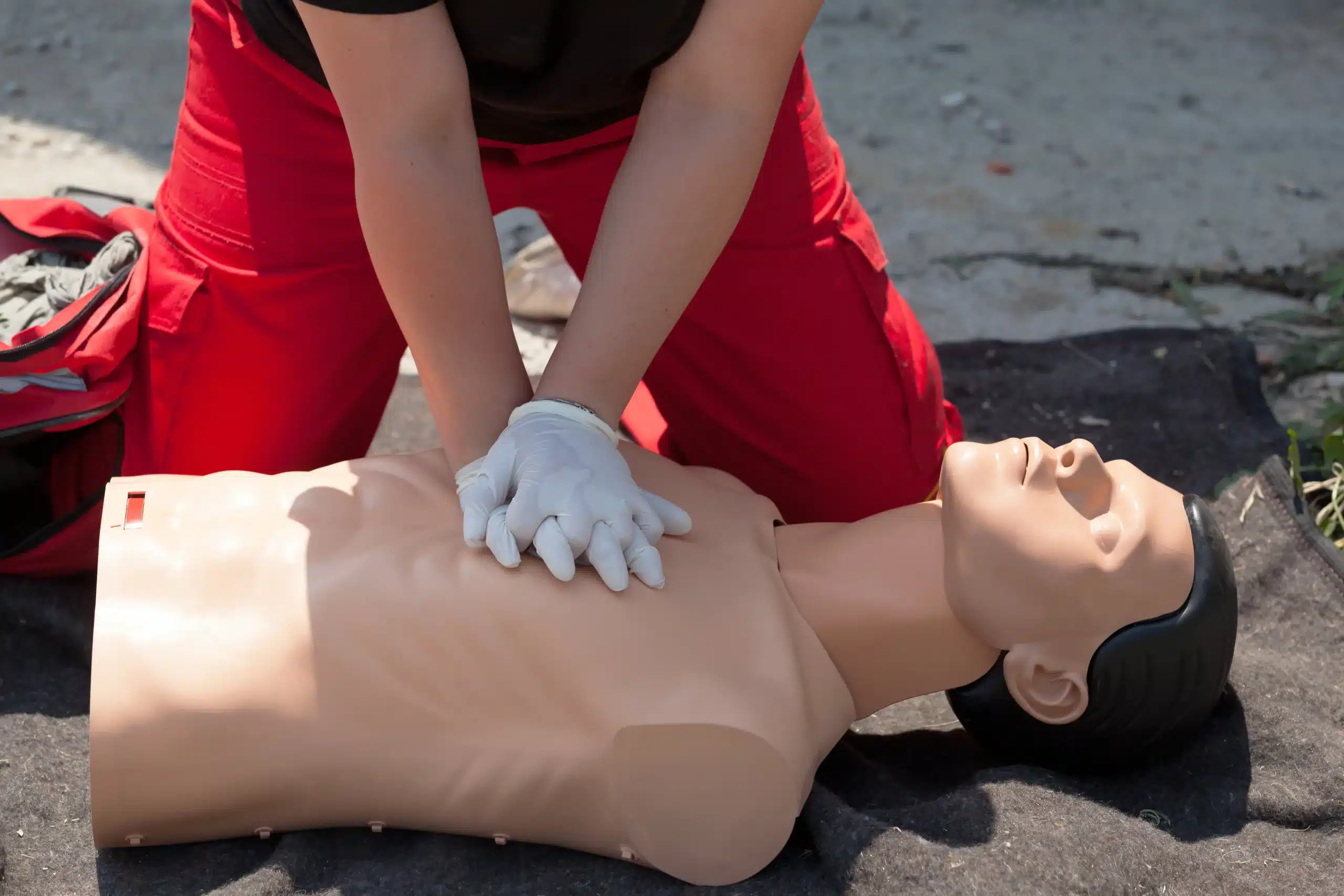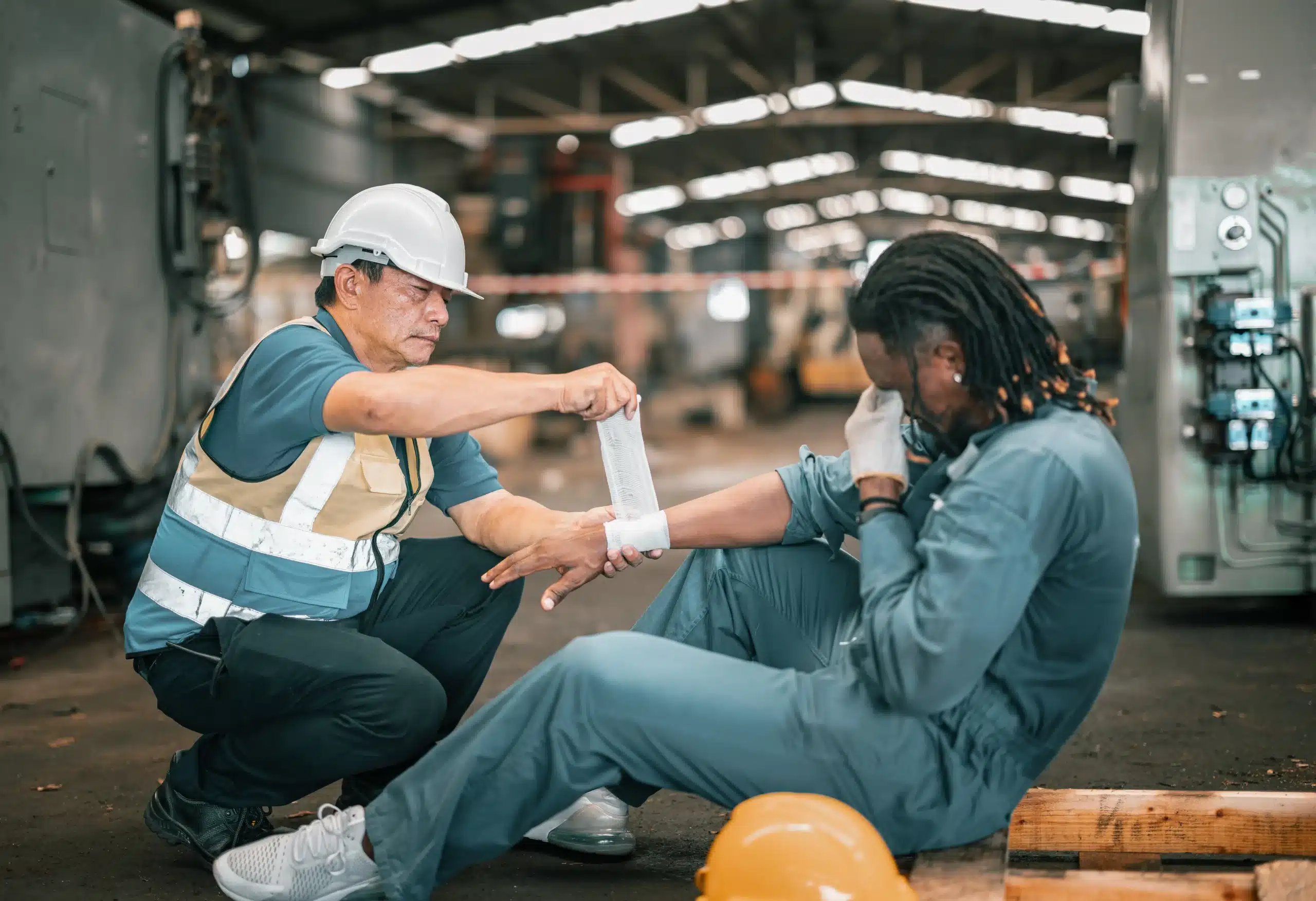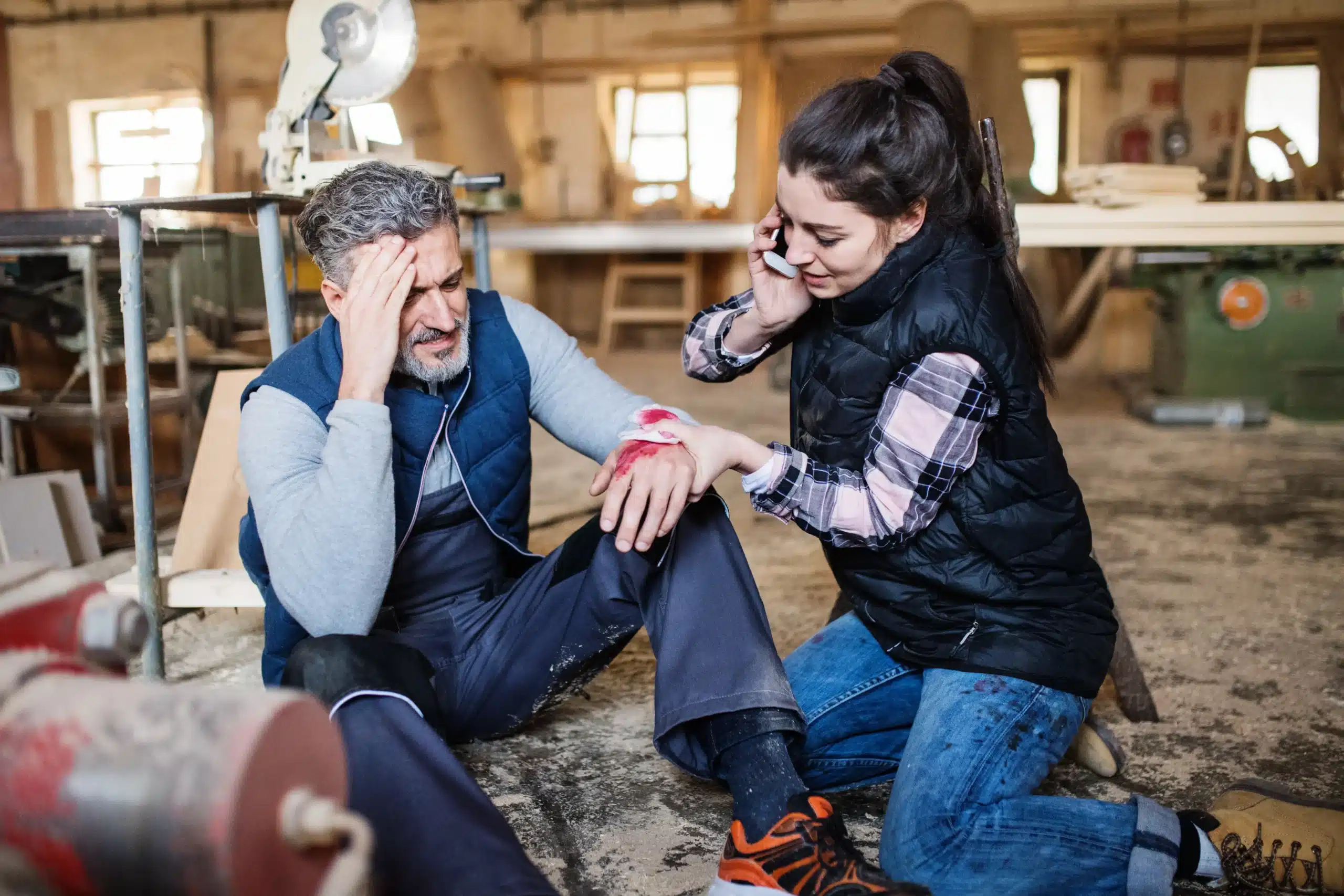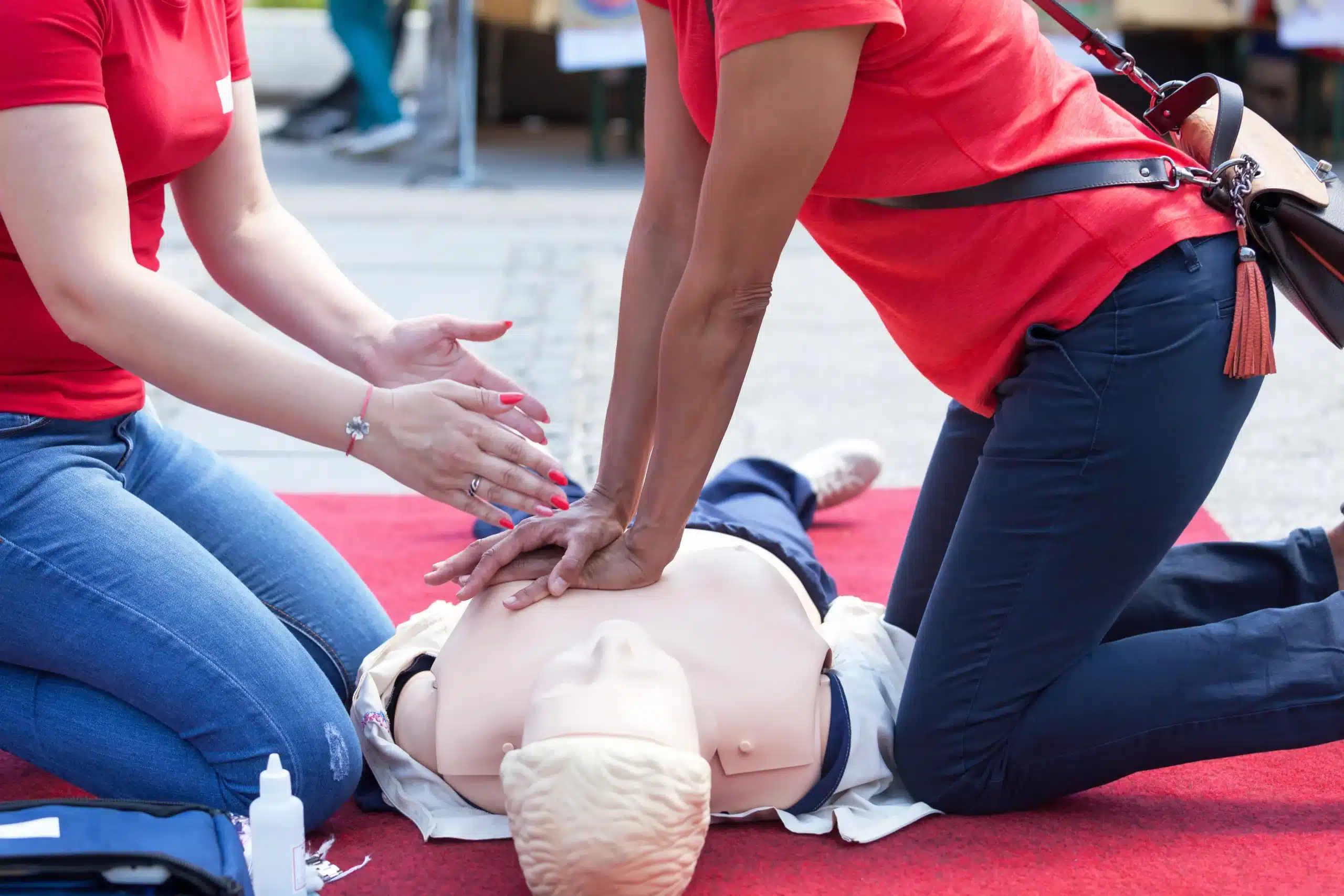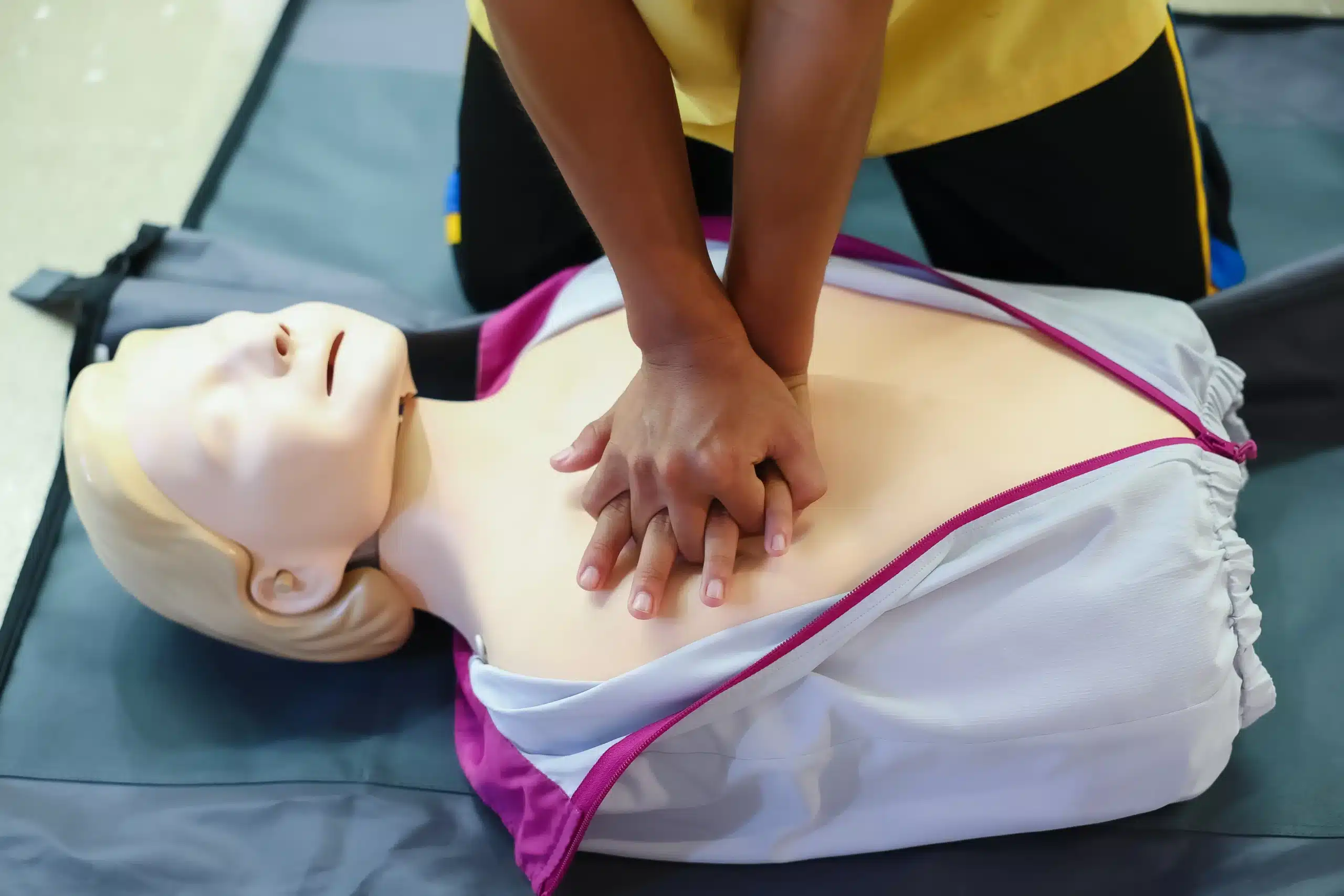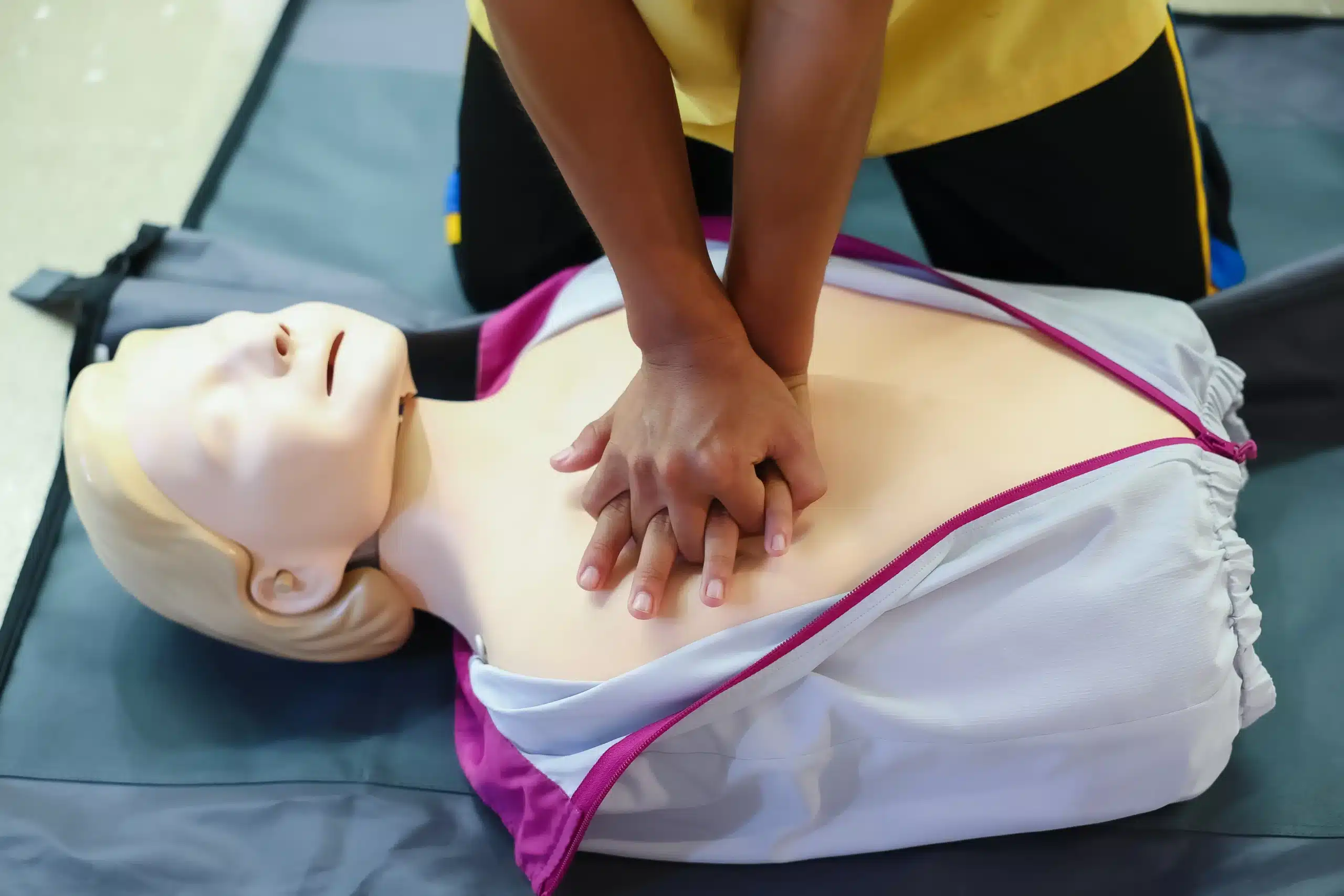Emergencies can happen anytime, anywhere. Are you prepared to respond? BLS classes in Santa Clara provide the knowledge and skills to handle critical situations like cardiac arrest, respiratory distress, and choking. This comprehensive guide explores the different types of BLS classes available in Santa Clara, including in-person, blended learning, and group training options. We’ll delve into the costs, certification process, and what to expect during a typical BLS class. Whether you’re a healthcare professional, a first responder, or simply someone who wants to be prepared, this post will help you find the right BLS training to meet your needs and empower you to make a difference in a medical emergency.
Key Takeaways
- BLS skills empower you in emergencies: Equipping yourself with BLS training builds confidence and provides the knowledge to act quickly and efficiently during crises, potentially saving lives.
- Select the right BLS course for your needs: Consider factors like your schedule, preferred learning style (in-person or blended), and budget when choosing a reputable provider like Safety Training Seminars, the American Heart Association, or the Red Cross.
- Stay current with BLS certifications: Maintain your skills and knowledge by renewing your certification every two years and pursuing continuing education opportunities to ensure you’re always prepared for emergencies.
What is BLS & Why is it Important in Santa Clara?
Basic Life Support (BLS) is a crucial set of life-saving skills and protocols used in critical emergencies like cardiac arrest, respiratory distress, and choking. It goes beyond basic first aid, providing the tools to manage these situations until professional medical help arrives. BLS isn’t just for healthcare providers and first responders—it’s a vital skill for anyone who wants to be prepared for an emergency. Learning BLS can empower you to make a real difference and potentially save a life. BLS certification courses cover essential techniques like CPR and how to use an AED.
Santa Clara, with its bustling population and public spaces, presents a higher likelihood of encountering such emergencies. BLS training equips individuals to respond effectively, giving them the confidence and knowledge to act quickly and efficiently. Having readily available, trained individuals within the community strengthens the chain of survival, bridging the gap until paramedics arrive. This community-based preparedness enhances public safety and can significantly improve outcomes in emergencies. For those working in healthcare, BLS certification is often a requirement, further emphasizing its importance in maintaining patient safety and ensuring a rapid, effective response. Find BLS courses in San Jose (Willow Glen) and surrounding areas to get certified. Even outside of healthcare, understanding BLS principles can be invaluable in homes, schools, and workplaces, creating safer environments for everyone.
BLS Class Types in Santa Clara
Choosing the right BLS class format depends on your learning style, schedule, and preferences. Santa Clara offers a variety of options to fit your needs. Let’s break down the most common types:
In-Person BLS Classes
In-person BLS classes offer a structured, hands-on learning environment. These classes provide direct interaction with a certified instructor who guides you through the material, demonstrates techniques, and provides immediate feedback. This format is ideal for those who learn best through direct observation and practice. You’ll work with training manikins and other equipment to simulate real-life scenarios. For those in Santa Clara, the Red Cross offers in-person BLS certification courses in nearby San Jose.
Blended Learning BLS Classes
Blended learning combines online convenience with the benefits of in-person skills practice. You’ll complete the theoretical coursework online at your own pace, then attend a shorter in-person session to practice your skills and complete a skills check. This format offers flexibility for busy schedules. The Red Cross provides blended learning BLS courses that typically involve 1–2 hours of online coursework and a 2–3 hour in-person session. This hybrid approach lets you absorb the information at your own speed before demonstrating your skills.
Group BLS Training for Organizations
Many organizations require employees to maintain current BLS certification. Group BLS training offers a cost-effective and convenient way to train multiple employees at once. These courses can be customized to meet the specific needs of your organization and can even be held on-site. Bay Area CPR offers group BLS training at your location, streamlining the training process for businesses in Santa Clara. This option ensures consistent training across your team and can incorporate industry-specific scenarios.
Compare Santa Clara BLS Class Providers
Choosing the right BLS class provider depends on your needs and preferences. Here’s a comparison of some popular options in Santa Clara:
Safety Training Seminars
Safety Training Seminars offers AHA-certified BLS training along with CPR, ACLS, and PALS courses right here in Santa Clara. They focus on providing high-quality instruction based on the latest guidelines. They also have a low-price guarantee, giving you confidence you’re getting a good value. Conveniently located, they serve San Jose, Santa Clara, and Sunnyvale. For those near San Jose, explore their BLS course schedule in Willow Glen. They also offer specialized courses like EMSA Health, Safety, and Lead Poisoning training for California childcare providers.
American Heart Association Centers
The American Heart Association (AHA) sets the standard for CPR and emergency cardiovascular care. Taking a BLS course directly through an AHA Training Center ensures you’re learning from an approved source. Find a list of Training Centers on the AHA website.
Red Cross Facilities
The American Red Cross is another well-known provider of BLS certification. Their courses meet national standards and are taught by certified instructors. The Red Cross offers a variety of courses to fit your schedule and learning style. Visit their website for BLS certification information.
Bay Area CPR
Bay Area CPR offers AHA-certified courses, including BLS. They provide online components, like the RQI program, a convenient option for busy professionals. This blended learning approach lets you complete some coursework online before attending an in-person skills session.
Santa Clara CPR Classes
Santa Clara CPR Classes, offered through Safety Training Seminars, provides AHA-certified training to a wide range of individuals, from healthcare providers to the general public. This makes them a versatile option for anyone seeking BLS certification in Santa Clara.
BLS Class Costs & Value
Finding the right BLS class often involves balancing quality instruction with affordability. Let’s break down the typical costs associated with BLS certification in Santa Clara and explore ways to maximize the value of your training.
Average BLS Class Prices
BLS class prices in Santa Clara can vary based on the provider, the class format (in-person or blended learning), and included materials. Expect to see prices ranging from $70 to $100. For example, Safety Training Seminars, known for their competitive pricing, offers various AHA-certified courses like BLS, ACLS, and PALS, often with a low-price guarantee. Comparing prices from different providers, such as Santa Clara CPR Classes, helps you find the best value.
BLS Class Discounts & Promotions
Look for discounts and promotions that can make BLS training more accessible. Some providers, like the Red Cross, offer periodic discounts on courses or package deals that combine BLS with other certifications like First Aid or CPR. Checking a provider’s website or subscribing to their email list can alert you to these savings opportunities.
Safety Training Seminars’ Low Price Guarantee
Safety Training Seminars offers a low price guarantee, ensuring you receive high-quality training at a competitive price. They provide American Heart Association courses in Santa Clara, including BLS, ACLS, and PALS, making them a convenient and cost-effective option. This commitment to affordability makes it easier to prioritize this essential training.
What Happens in a BLS Class?
This section covers what you can expect during a typical BLS course, from the class format to the certification process. Understanding the structure and content will help you feel prepared and confident going into your training.
Class Length & Structure
A typical Basic Life Support (BLS) class takes about four and a half hours. If you choose a blended learning format, you’ll complete about one to two hours of online coursework at your own pace, then attend a shorter in-person skills session. This blended learning option is great if you prefer to review some of the material beforehand. Safety Training Seminars offers both traditional and blended learning formats for our BLS courses in San Jose.
Theory & Hands-on Practice
BLS classes cover core life-saving techniques, including CPR for adults, children, and infants, how to use an Automated External Defibrillator (AED), and how to clear an obstructed airway. The course uses real-world scenarios to help you apply these skills in emergency situations. CPR can be physically demanding, so it’s important to consider your physical abilities before signing up. If you have any concerns, discuss them with your chosen training provider, like Safety Training Seminars, before the class.
BLS Certification Process
After successfully completing the BLS class, you’ll receive your BLS certification, which is valid for two years. Most providers, including Safety Training Seminars, issue certification cards the same day you complete the course. When your certification is close to expiring, you can take a renewal course to refresh your skills and stay up-to-date with the latest guidelines. These renewal courses cover the same core content as the initial BLS class, ensuring you maintain your life-saving abilities.
BLS Instructor Qualifications & Training Quality
Choosing the right BLS class means finding qualified instructors who can effectively teach this life-saving skill. Understanding instructor qualifications and training quality ensures you receive the best possible instruction.
BLS Instructor Requirements
BLS instructors are certified by nationally recognized organizations like the American Heart Association (AHA). These organizations maintain rigorous standards to ensure instructors possess the necessary knowledge and skills. AHA BLS classes, for example, equip individuals with the skills to respond to emergencies. Instructors undergo specific training covering adult, child, and infant CPR, use of an AED, and relief of choking. They must also demonstrate proficiency in teaching methodologies and maintain current certifications.
Evaluate Instructor Experience & Expertise
Beyond basic certifications, consider the instructor’s experience and expertise. Look for instructors with a strong background in healthcare, emergency services, or related fields. Safety Training Seminars offers AHA-certified courses in Santa Clara, taught by experienced professionals. Practical experience translates to more effective teaching and a deeper understanding of real-world scenarios. Check for reviews and testimonials to gauge past students’ satisfaction with the instructor’s teaching style and knowledge. A good instructor will not only teach the techniques but also instill confidence and empower students to act effectively in emergencies. Successfully completing a CPR and first-aid course provides you with an official certification card, valid for two years, from organizations like the AHA. More details on CPR training and certification can be found on Milpitas CPR Classes. The quality of instruction directly impacts your ability to retain the information and perform BLS effectively when needed.
Choose the Right BLS Class
Finding the right BLS class means considering a few key factors to ensure it aligns with your needs and learning preferences. Let’s break down how to choose the best fit.
Determine Your Professional Requirements
First, identify why you need BLS certification. Are you a healthcare provider, a student pursuing a medical career, or someone wanting to be prepared for emergencies? Different professions have specific requirements. Healthcare professionals often need certification from an accredited organization like the American Heart Association. Understanding your professional requirements will guide you toward the appropriate BLS course. If you’re unsure, contact your employer or professional organization.
Evaluate Schedule Flexibility
Life gets busy, so finding a class that fits your schedule is essential. Look for providers offering various class times and days. Safety Training Seminars offers classes daily, including weekends. Consider whether weekday evenings, weekends, or intensive one-day courses work best for you. Also, think about the class location and whether online or in-person options are more convenient.
Assess Your Learning Style
Everyone learns differently. Some thrive in a traditional classroom, while others prefer a self-directed approach. Think about what works best for you. Do you prefer hands-on learning, or do you learn better through online modules? Many providers offer different learning formats, including in-person classes, blended learning (a combination of online and in-person instruction), and online-only options. Explore the different BLS class types to find the best fit. Blended learning, for example, allows you to study online at your own pace before practicing skills in person.
Register & Prepare for BLS Classes
How to Sign Up
Signing up for a BLS class is straightforward. Register online through our BLS course page for classes in San Jose (Willow Glen) and nearby cities. We offer classes daily, including weekends, to accommodate busy schedules.
Required Documents & Prerequisites
There are no prerequisites for our BLS course. You’ll receive your American Heart Association BLS Provider certification card upon successful completion of the class. This means you’ll leave with the certification you need.
Tips to Prepare
Want to feel confident on test day? We suggest reviewing the online videos we provide before class. These videos offer a refresher on key BLS concepts and techniques. While BLS doesn’t demand intense physical activity, the skills test does involve performing CPR. If you have any physical limitations, consider whether you’ll be comfortable with these tasks. You can always reschedule if needed. We want you to have a positive learning experience.
Maintain Your BLS Certification
Earning your BLS certification is a significant achievement, but staying current is equally important. Knowing how and when to recertify ensures you’re always ready to provide effective, high-quality care.
Renewal Requirements
BLS certification is typically valid for two years. Keep track of your certification’s expiration date to recertify before it lapses. Many healthcare providers think BLS certification is a one-and-done requirement. However, staying up-to-date on the latest guidelines and techniques is crucial for providing the best possible care. Recertification courses are available for those nearing their expiration date. Check with your certifying organization, such as the American Heart Association or the Red Cross, for specific renewal requirements.
Continuing Education Options
Even if your certification isn’t up for renewal yet, ongoing learning is essential in healthcare. Regularly reviewing BLS skills and knowledge can significantly improve your confidence and competence in emergencies. Consider exploring additional training opportunities, such as ACLS or PALS, to broaden your skillset. Staying informed about the latest developments in resuscitation science demonstrates your professional commitment to providing the highest standard of patient care. You can find resources and continuing education opportunities through organizations like Safety Training Seminars. Regularly refreshing your BLS knowledge strengthens your skills and reinforces best practices for patient care.
Common BLS Class Misconceptions
It’s easy to get confused about BLS certification, especially if you’re new to the process. Let’s clear up some common misconceptions about BLS classes.
Who Needs BLS Training?
Many people assume only doctors and nurses need BLS training. While it’s definitely essential for healthcare providers, BLS certification is valuable for a much broader range of people. First responders, teachers, coaches, lifeguards, and other professionals who might encounter medical emergencies all benefit from this training. Even if your job doesn’t require it, learning BLS equips you with life-saving skills to help family, friends, or even strangers. Skills like using an AED, basic airway management, and assisting someone who is choking can make a real difference in emergencies. Learn more on our BLS course page.
Online vs. In-Person Training
Another misconception is that online BLS certification isn’t as good as in-person training. While in-person classes offer hands-on practice, many accredited online BLS courses provide thorough instruction and are widely accepted by employers and organizations. Choosing a reputable provider like Safety Training Seminars is key to ensuring high-quality training, regardless of the format. Consider your learning style and schedule when deciding which format works best for you.
How Often to Recertify
You might also think BLS certification lasts forever. It doesn’t. Most organizations recommend renewing your BLS certification every two years. This keeps you current on the latest guidelines and techniques for CPR and emergency care. Regular recertification keeps your skills sharp and ensures you’re aware of any protocol changes. Find a class that fits your schedule by browsing our available BLS courses in San Jose.
Related Articles
- CPR Certification San Jose: Your Complete Guide – San Jose CPR Classes
- Why CPR is Crucial in Saving Lives
- BLS Certification San Jose | AHA BLS Classes & Training
- ACLS Courses in Sunnyvale: Your Complete Guide – San Jose CPR Classes
Frequently Asked Questions
Is BLS certification required for my job?
BLS certification is often mandatory for healthcare professionals and those in related fields. However, even if it’s not a job requirement, having BLS training can be a valuable asset in any profession and in your personal life. Check with your employer or professional organization for specific requirements in your field.
What’s the difference between in-person and blended learning BLS classes?
In-person classes provide face-to-face instruction and hands-on practice throughout the entire course. Blended learning combines online coursework with a shorter, in-person skills session. Both formats cover the same material and lead to the same certification; the best choice depends on your learning style and schedule.
How much does a BLS class cost in Santa Clara?
BLS class costs typically range from $70 to $100 in Santa Clara. Prices can vary depending on the training provider and the format of the class. Look for providers offering competitive pricing or discounts. Safety Training Seminars, for example, has a low-price guarantee.
How long does BLS certification last, and how do I renew it?
BLS certification is generally valid for two years. You’ll need to take a recertification course before your current certification expires to maintain your credentials. Renewal courses cover updated guidelines and techniques, ensuring your skills remain current.
What if I have physical limitations? Can I still take a BLS class?
While BLS training involves physical activity, particularly during CPR practice, modifications can often be made to accommodate certain limitations. Discuss any concerns with your chosen training provider before the class to ensure they can meet your needs and provide a positive learning experience.


